Abstract
Various external special interest groups are promoting attempts to better measure and control the performance of the medical profession, primarily to restrain costs. We can neither afford to ignore the rising costs nor reject efforts by provincial licensing authorities to improve supervision of the quality of care. Furthermore, there is increasing public interest in the outcome of medical treatment and a suspicion that some care may be unnecessary or inappropriate. Much of what physicians do is not based on impeccable or complete scientific evidence, and we have not established a method whereby science can consistently be translated into practice. Optimal practice patterns must be defined to improve the quality of care and to maximize the efficiency with which scarce resources are used. Careful scientific evaluation of data is particularly necessary with the arrival of new drugs and technology. Sensible, flexible guidelines produced by appropriate panels will help promote improved practice. Rigid standards must be avoided to allow for individual consideration and scientific innovation. The recognized difficulties of influencing clinical practice by precept or education and the problems imposed by rapidly changing scientific knowledge are two hurdles to be overcome. Licensing bodies must identify and enforce minimal standards, but optimal practice patterns are better devised by a broader segment of the profession. Intervention by third-party payers, as is prevalent in the United States, intrudes upon physician autonomy and reduces access to care. Physicians must support the development of guidelines for optimal medical practice based on the best existing data and focused on improving the quality of care.
Full text
PDF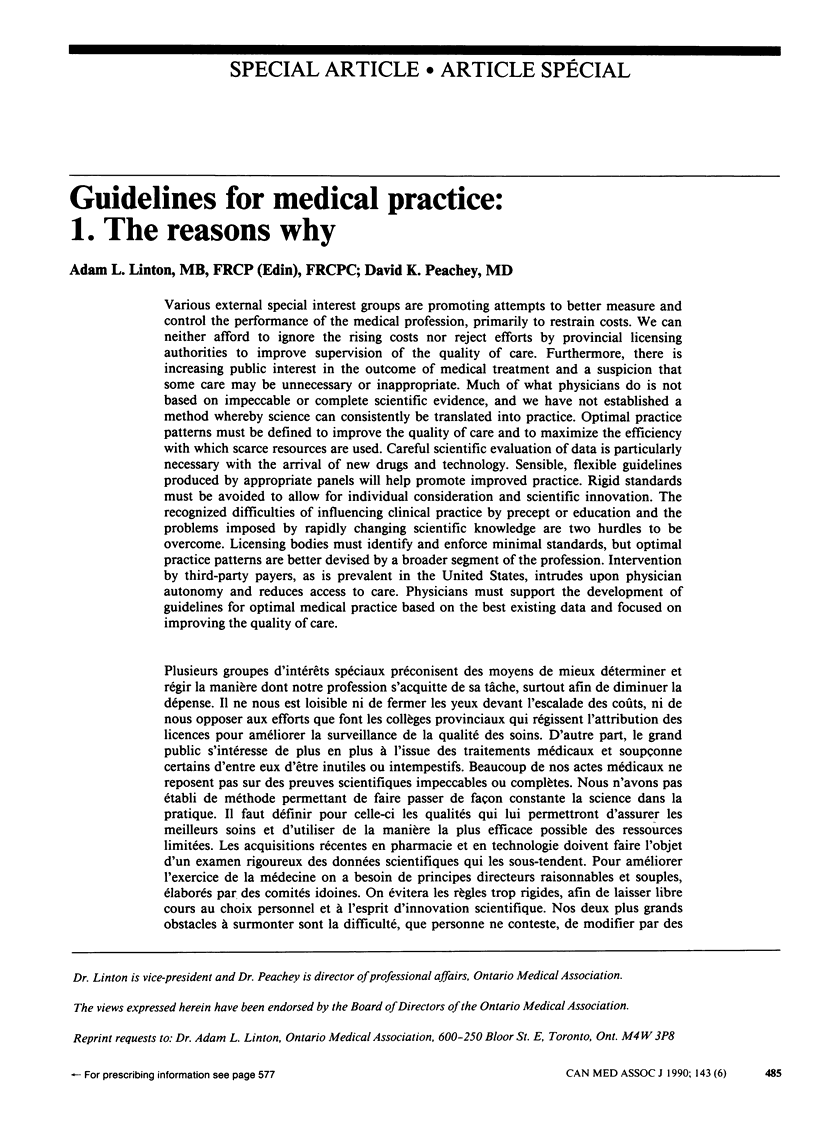
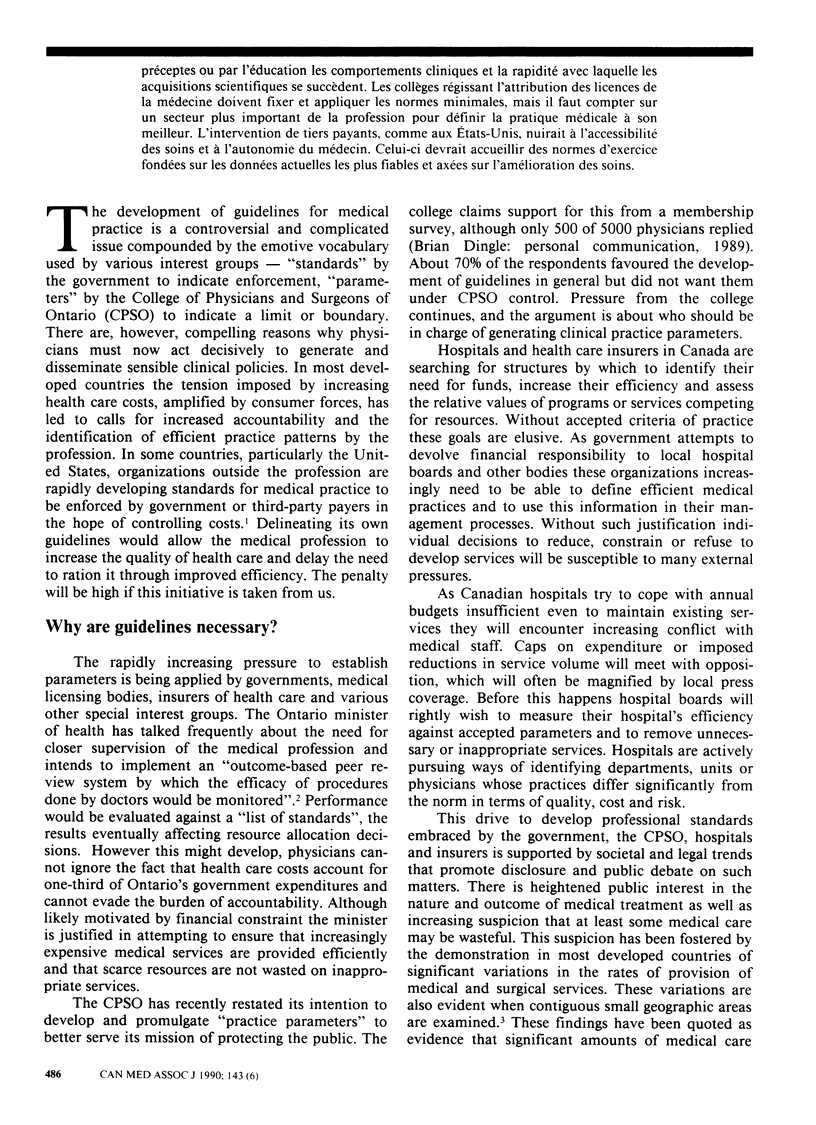
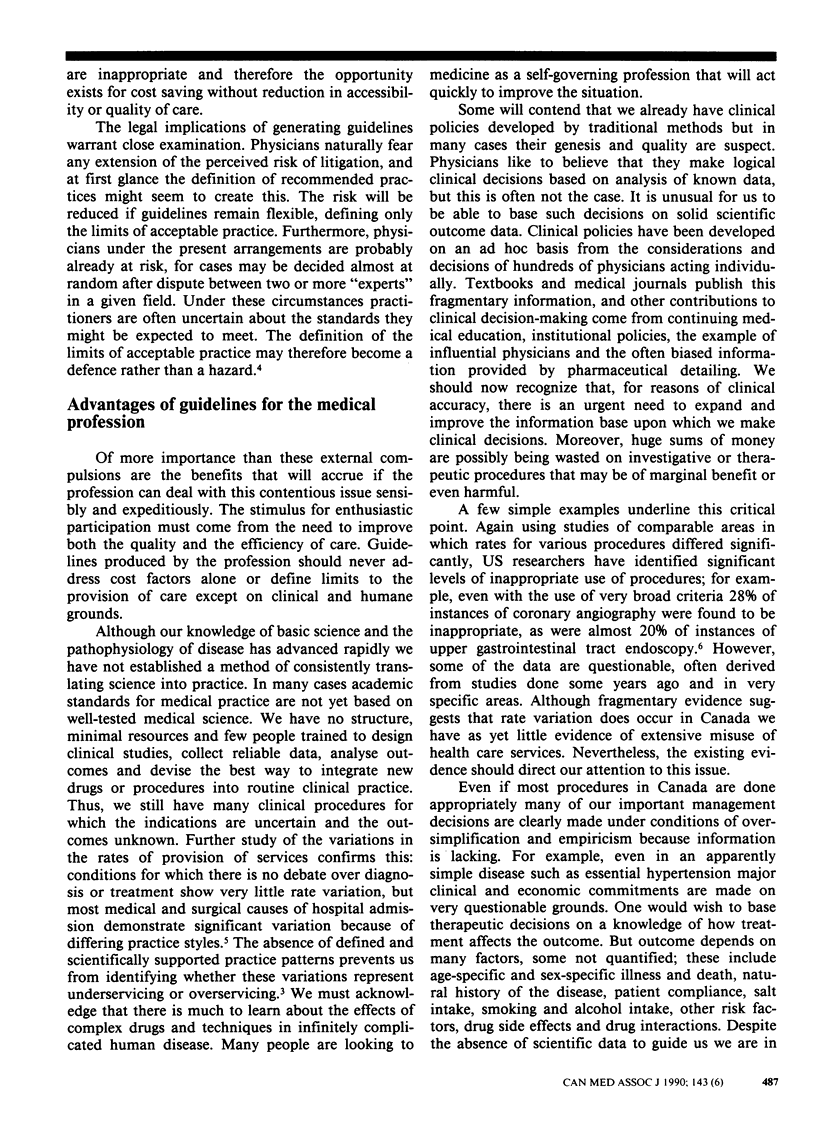
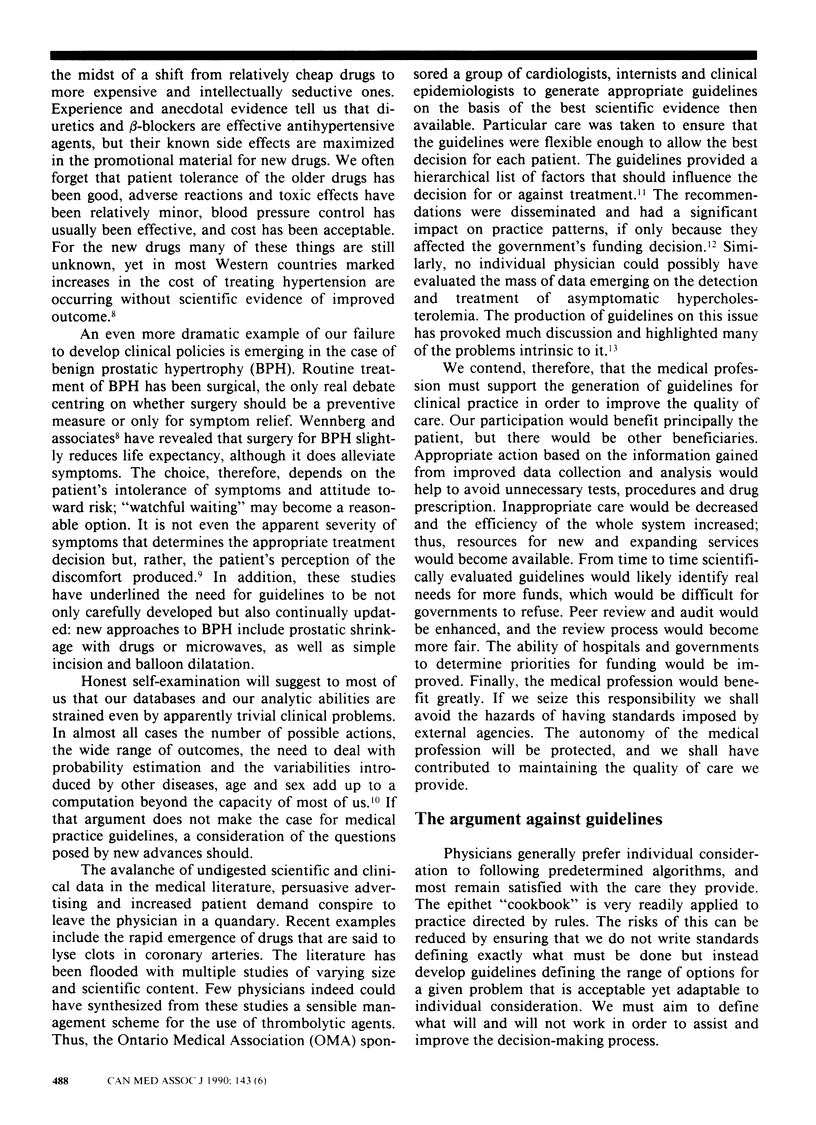
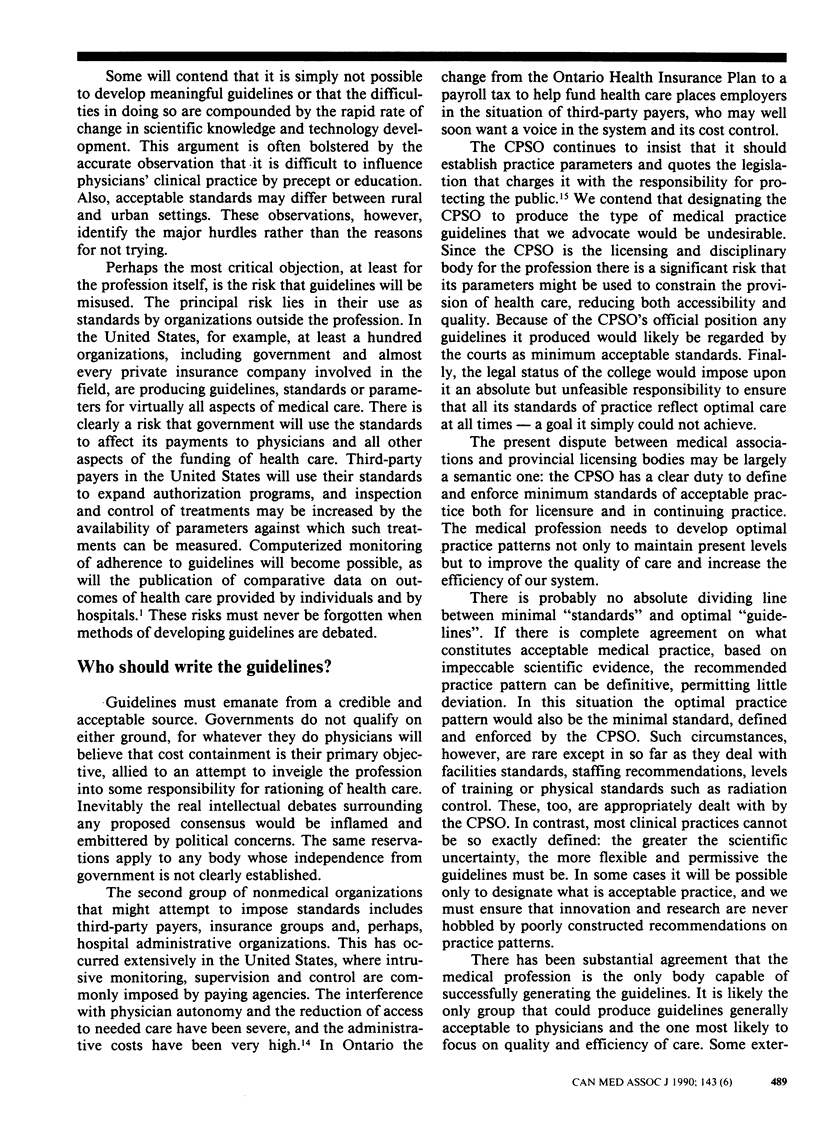
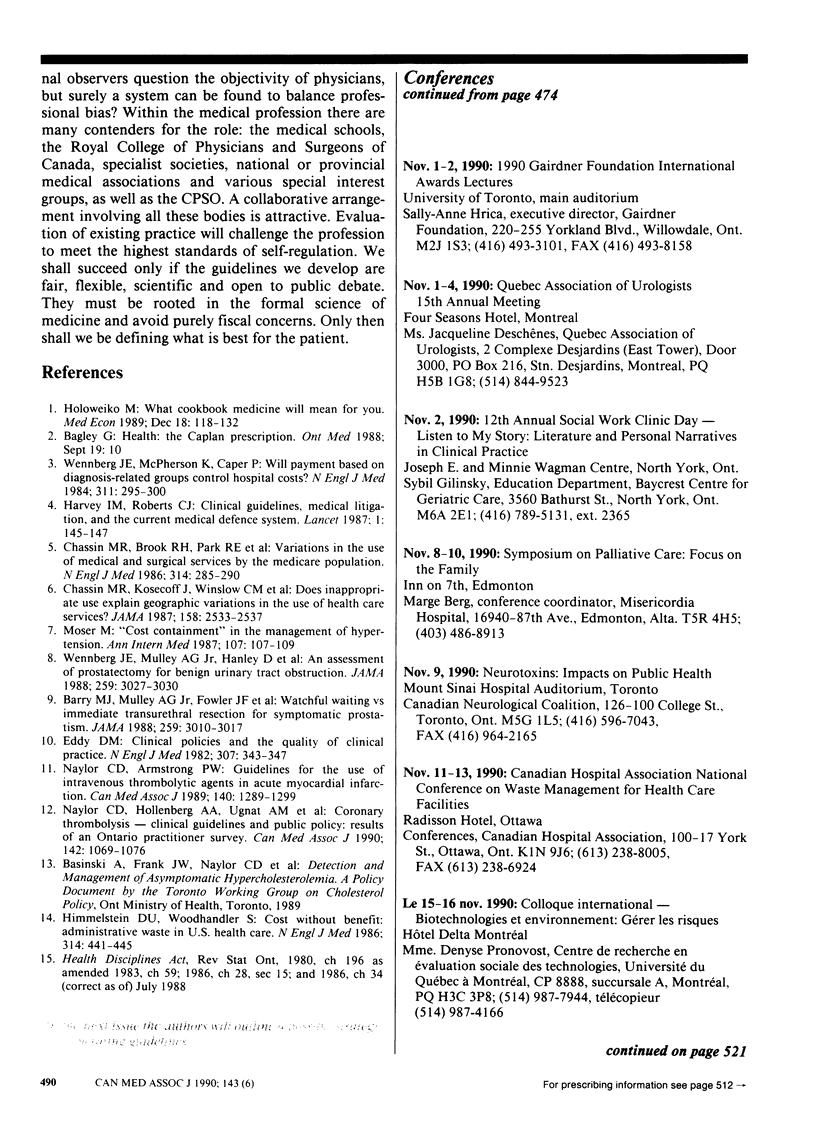
Selected References
These references are in PubMed. This may not be the complete list of references from this article.
- Barry M. J., Mulley A. G., Jr, Fowler F. J., Wennberg J. W. Watchful waiting vs immediate transurethral resection for symptomatic prostatism. The importance of patients' preferences. JAMA. 1988 May 27;259(20):3010–3017. [PubMed] [Google Scholar]
- Chassin M. R., Brook R. H., Park R. E., Keesey J., Fink A., Kosecoff J., Kahn K., Merrick N., Solomon D. H. Variations in the use of medical and surgical services by the Medicare population. N Engl J Med. 1986 Jan 30;314(5):285–290. doi: 10.1056/NEJM198601303140505. [DOI] [PubMed] [Google Scholar]
- Chassin M. R., Kosecoff J., Park R. E., Winslow C. M., Kahn K. L., Merrick N. J., Keesey J., Fink A., Solomon D. H., Brook R. H. Does inappropriate use explain geographic variations in the use of health care services? A study of three procedures. JAMA. 1987 Nov 13;258(18):2533–2537. [PubMed] [Google Scholar]
- Eddy D. M. Clinical policies and the quality of clinical practice. N Engl J Med. 1982 Aug 5;307(6):343–347. doi: 10.1056/NEJM198208053070604. [DOI] [PubMed] [Google Scholar]
- Etlinger H. M., Heusser C. H. T15 dominance in BALB/c mice is not controlled by environmental factors. J Immunol. 1986 Mar 15;136(6):1988–1991. [PubMed] [Google Scholar]
- Harvey I. M., Roberts C. J. Clinical guidelines, medical litigation, and the current medical defence system. Lancet. 1987 Jan 17;1(8525):145–147. doi: 10.1016/s0140-6736(87)91976-3. [DOI] [PubMed] [Google Scholar]
- Himmelstein D. U., Woolhandler S. Cost without benefit. Administrative waste in U.S. health care. N Engl J Med. 1986 Feb 13;314(7):441–445. doi: 10.1056/NEJM198602133140710. [DOI] [PubMed] [Google Scholar]
- Holoweiko M. What cookbook medicine will mean for you. Med Econ. 1989 Dec 18;66(25):118-20, 125-7, 130-3. [PubMed] [Google Scholar]
- Moser M. "Cost containment" in the management of hypertension. Ann Intern Med. 1987 Jul;107(1):107–109. doi: 10.7326/0003-4819-107-1-107. [DOI] [PubMed] [Google Scholar]
- Naylor C. D., Armstrong P. W. Guidelines for the use of intravenous thrombolytic agents in acute myocardial infarction. Ontario Medical Association Consensus Group on Thrombolytic Therapy. CMAJ. 1989 Jun 1;140(11):1289–1299. [PMC free article] [PubMed] [Google Scholar]
- Naylor C. D., Hollenberg A. A., Ugnat A. M., Basinski A. Coronary thrombolysis--clinical guidelines and public policy: results of an Ontario practitioner survey. CMAJ. 1990 May 15;142(10):1069–1076. [PMC free article] [PubMed] [Google Scholar]
- Wennberg J. E., McPherson K., Caper P. Will payment based on diagnosis-related groups control hospital costs? N Engl J Med. 1984 Aug 2;311(5):295–300. doi: 10.1056/NEJM198408023110505. [DOI] [PubMed] [Google Scholar]
- Wennberg J. E., Mulley A. G., Jr, Hanley D., Timothy R. P., Fowler F. J., Jr, Roos N. P., Barry M. J., McPherson K., Greenberg E. R., Soule D. An assessment of prostatectomy for benign urinary tract obstruction. Geographic variations and the evaluation of medical care outcomes. JAMA. 1988 May 27;259(20):3027–3030. [PubMed] [Google Scholar]


